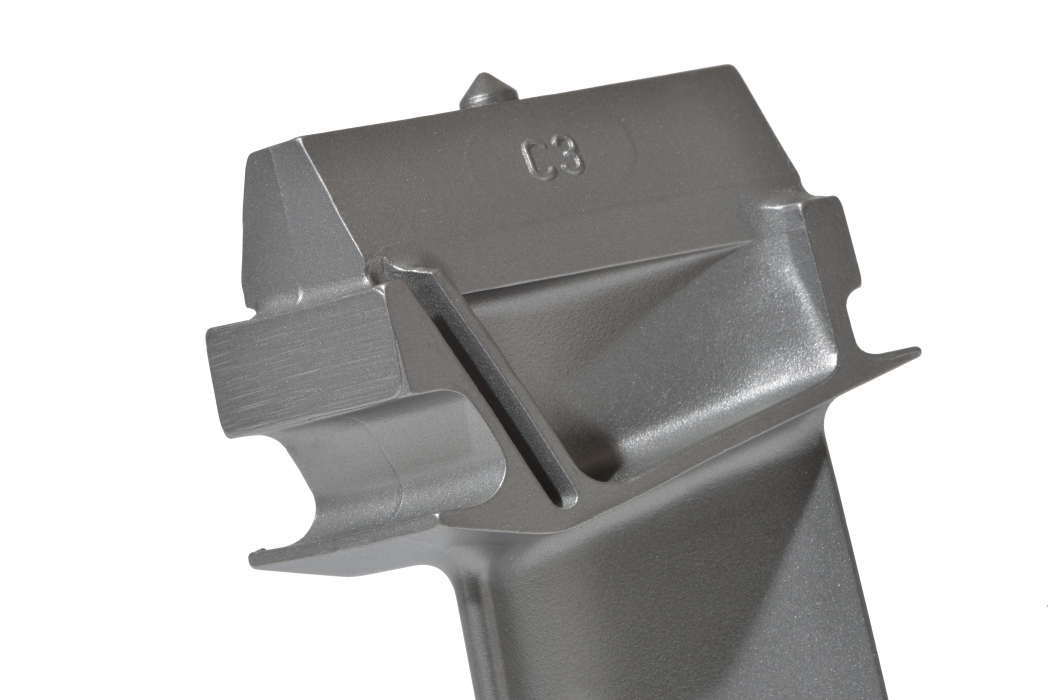Wet blasting is becoming increasingly popular in the Aerospace industry as a way of preparing metal surfaces for NDT – and for preparing carbon fibre surfaces for bonding, explains Phil Dawes, Aerospace Sales Engineer at Vapormatt.
Preparing a material surface for non-destructive testing (NDT) can be carried out in a number of ways, of which acid etching has traditionally been one of the most common. The process does, however, carry a variety of health, safety and environmental risks. As a result, wet blasting, which is widely used throughout industry, is becoming increasingly popular.
Wet blasting relies on a ‘slurry’ that is pumped out of a nozzle and sprayed across the material’s surface. The slurry is actually a suspension of solid particles in a mixture of water and air. These particles can range from very mild to highly abrasive. Altering the nature of the particle – and other factors such as the temperature of the water, air pressure and nozzle size will therefore cause a very different yet highly controlled surface effect.
Preparing a surface for NDT sits at the less abrasive end of the spectrum. The aim of the operation is to create a clean and active surface prior to testing, so that it can be analysed for cracks and other potential defects. The better prepared the surface, the more accurate the test results are likely to be.
Wet blasting can be used for newly manufactured parts, prior to testing for cracks. But the process is most often found as part of the maintenance process, when it is used to remove burnt-on deposits such as carbon before proceeding to the surface of the material beneath.
Parts to be tested, which can range from nuts and bolts up to large components like combustion casings, are usually wet blasted with aluminium oxide of 180-400 mesh. Although this can be carried out using a hand operated wet blast machine, there is an ever-greater demand for highly automated systems to be used.
The main reason for this is consistency or repeatability: an automated process will ensure that the entire part is blasted evenly – meaning that it will have uniform cleanliness and surface characteristics across its entire area. This will lead to more accurate test results. An ideal part to treat in this way might be a bogie beam, which has so many profiles and angles to blast that it can only be done properly on an automatic machine with four-axes of movement.
The wet blasting process must be tightly controlled, especially with regards to the level of abrasive particles that remain in the slurry. Computerised monitoring of the abrasive to water ratio is crucial when preparing a surface for NDT and also for other common applications such as peening. Here, precision control of the blast pattern, shape and pressure ensures that the surface being treated is not damaged in any way. An expensive part such as a combustion casing could be damaged if it were ‘over-blasted’ – such as by maintaining the gun nozzle in the same position for too long or by using excessive pressure, Automatated controls ensures consistency of finish.
Components such as combustion casings are generally weighed before and after they are tested, so again accurate PLC control is essential to control material removal. Another increasingly popular use of wet blasting, in a similarly ‘mild’ version, is as a way of preparing carbon fibre structures for bonding. These materials have become increasingly prevalent in the industry – whether for helicopter blades or wing boxes and are often combined with components made of other materials such as titanium or aluminium. Bonding these dissimilar materials together correctly is crucial and, as with any bonding, the surfaces must be properly prepared.
Preparing the surface of a carbon fibre part is a delicate process, because the fibres themselves must not be damaged. The aim is to introduce some ‘roughness’ to the surface, but no more. (Alternative methods include sandpapering and ‘peel ply’ – in which adhesive tape is laid on the surface and pulled off.) As when preparing metals for NDT testing, carbon fibre composites must not be treated too harshly. Again, the wet blasting medium is typically aluminium oxide, but of 100-120 mesh, at a maximum blast pressure of 3 bar. Again, repeatability is crucial, meaning that automated wet blasting is preferred to a manual process.
Once the bond has been made, it can be tested for tensile strength or bond strength – using a lap shear test. The strength of the bond will largely be determined by how well the two surfaces were prepared and the cleanliness of those surfaces. In the aerospace sector, the chances are that both will have been done with wet blasting.
If you have an application that could benefit from wet blasting or would like to discuss this with one of our specialists you can contact us today by email or by calling: +44 1823 257 976























